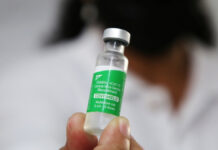
GREAT FALLS, Mont.: Over the last decade, about $30 million in grant money has helped the McLaughlin Research Institute pursue research that Dr. George Carlson hopes eventually will lead to medicines or procedures to reverse Alzheimer’s disease.
And the longtime director and professor at the Great Falls research center said recent developments at MRI “are the most exciting thing I’ve done in 30 years.” Those advances are the institute’s experiments that enable researchers to observe how Alzheimer’s spreads in the brains of its specially bred lab mice, said Carlson, who’s trained in physiology and biochemistry.
Alzheimer’s has remained a mystery for centuries because it is a slow-developing disease with symptoms that are mostly behavioral and don’t show up in a blood test, although it may be detected through brain imaging, such as a CT scan or MRI.
Carlson said it often is difficult for physicians to detect Alzheimer’s because they see patients only intermittently and briefly, and many people with the disease have learned to compensate for AD’s hallmark memory loss and difficulty understanding. Commonly family members who have much more contact with patients see the change “over the years.”
McLaughlin Research is pursuing avenues to understand how the two main proteins present in Alzheimer’s, both of which kill brain cells, could progress.
Amyloid beta, a chain of amino acids, in some people clusters and forms plaques that disturb communication between brain cells and eventually destroy the cells.
Carlson said tau prions also are a hallmark of Alzheimer’s. Prions are proteins that are “misfolded,” or take on an irregular shape. In Alzheimer’s, tau prions travel from cell to cell causing more and more misfolding that affects more and more areas of the brain, causing increased damage.
Other variants of prions are blamed for neurological conditions such as Creutzfeldt-Jakob disease and bovine spongiform encephalopathy (BSE), or mad cow disease.
But BSE has killed a total 300 people in the world, compared with Alzheimer’s, which is the sixth-leading cause of death in the United States. Alzheimer’s killed 83,494 people in 2010.
Environmental factors, including high blood pressure and traumatic brain injury, also can be risk factors for Alzheimer’s, but Carlson said amyloid beta and tau prions must both be present for a true Alzheimer’s diagnosis.
“It has now been revealed that Alzheimer’s and related prions are not infectious. . You don’t get Alzheimer’s from eating something” or other types of exposure, he said.
He said in rare cases, some families are genetically predisposed to the misfolding phenomenon. -AP






